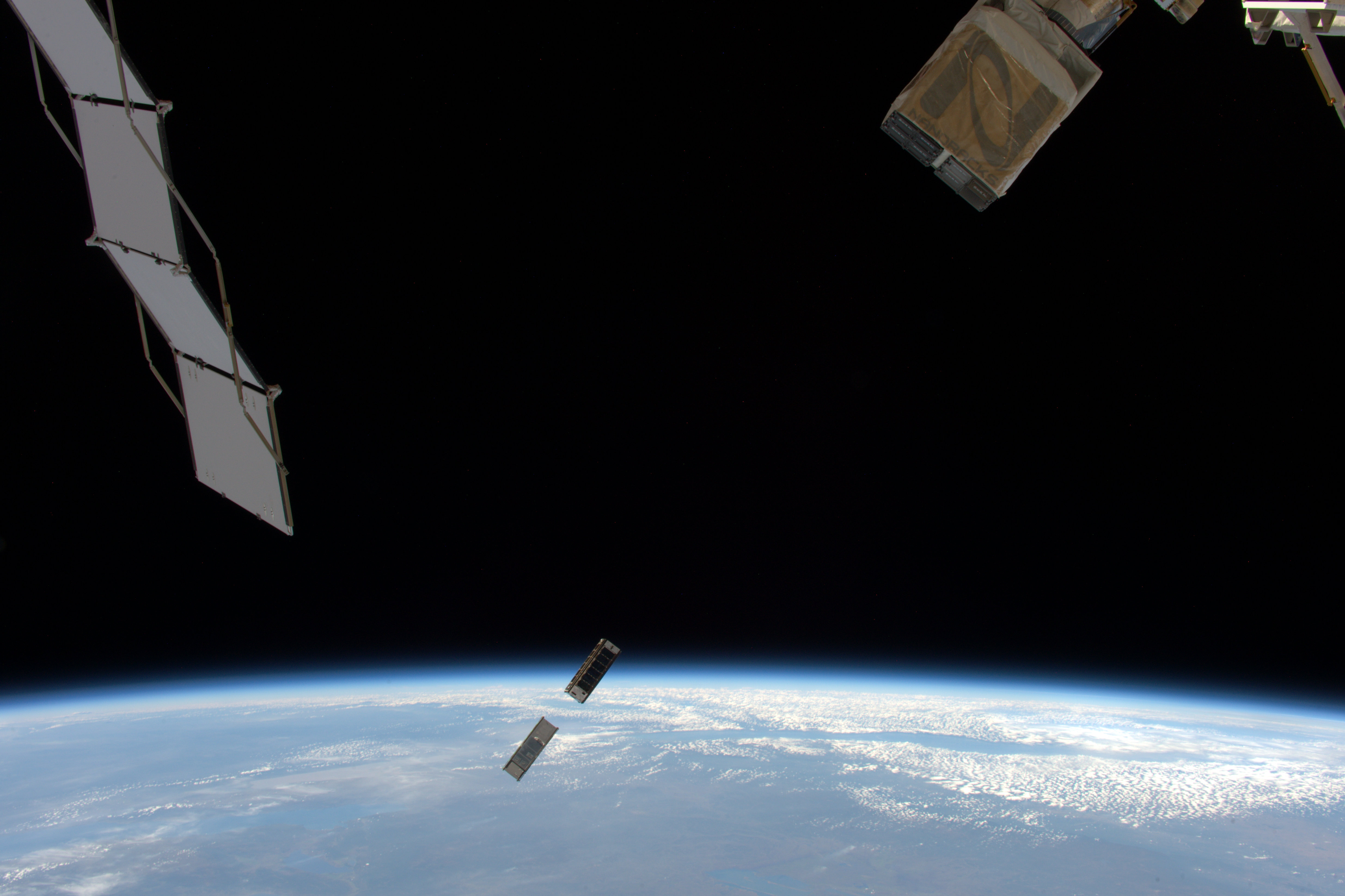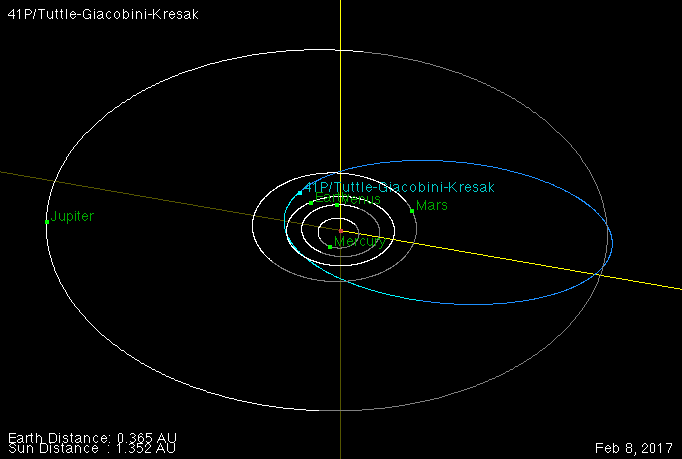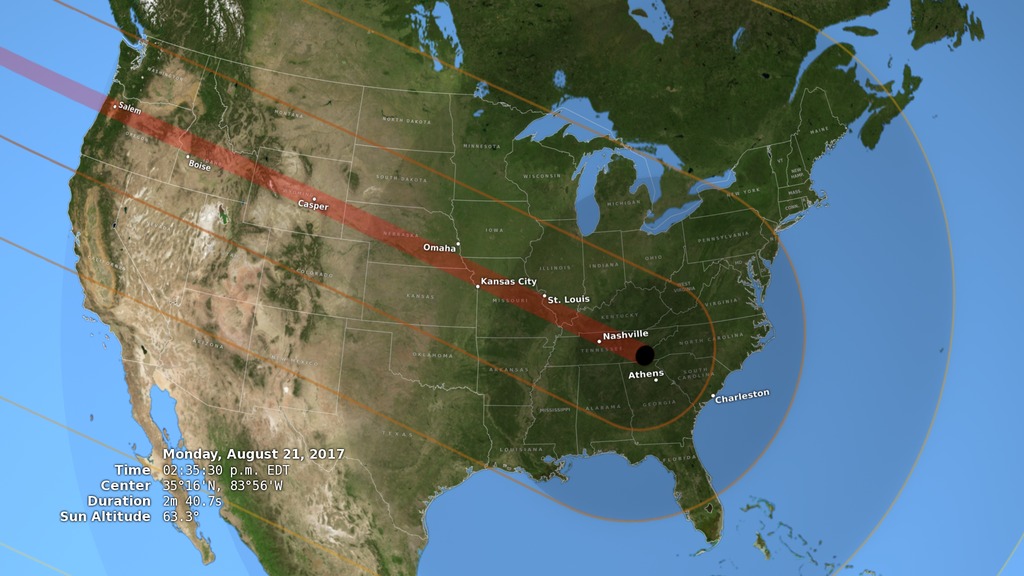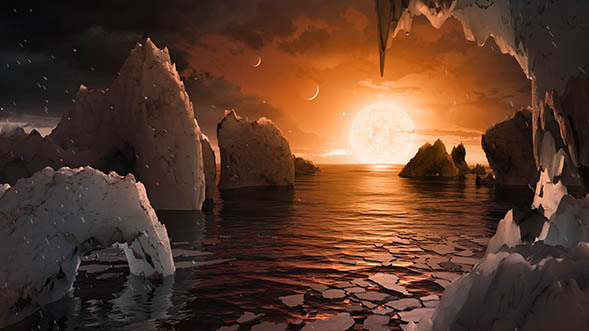Next Launch
Total Students
2,609
Total Launches
683
Eggs Survived
418 61.2%
Rockets Survived
536 78.5%
Dec. 1, 2016
Big Science in Small Packages
by Marcus Woo
About 250 miles overhead, a satellite the size of a loaf of bread flies in orbit. It's one of hundreds of so-called CubeSats - spacecraft that come in relatively inexpensive and compact packages - that have launched over the years. So far, most CubeSats have been commercial satellites, student projects, or technology demonstrations. But this one, dubbed MinXSS ("minks") is NASA's first CubeSat with a bona fide science mission.
Launched in December 2015, MinXSS has been observing the sun in X-rays with unprecedented detail. Its goal is to better understand the physics behind phenomena like solar flares - eruptions on the sun that produce dramatic bursts of energy and radiation.
Much of the newly-released radiation from solar flares is concentrated in X-rays, and, in particular, the lower energy range called soft X-rays. But other spacecraft don't have the capability to measure this part of the sun's spectrum at high resolution - which is where MinXSS, short for Miniature Solar X-ray Spectrometer, comes in.
Using MinXSS to monitor how the soft X-ray spectrum changes over time, scientists can track changes in the composition in the sun's corona, the hot outermost layer of the sun. While the sun's visible surface, the photosphere, is about 6000 Kelvin (10,000 degrees Fahrenheit), areas of the corona reach tens of millions of degrees during a solar flare. But even without a flare, the corona smolders at a million degrees - and no one knows why.
One possibility is that many small nanoflares constantly heat the corona. Or, the heat may come from certain kinds of waves that propagate through the solar plasma. By looking at how the corona's composition changes, researchers can determine which mechanism is more important, says Tom Woods, a solar scientist at the University of Colorado at Boulder and principal investigator of MinXSS: "It's helping address this very long-term problem that's been around for 50 years: how is the corona heated to be so hot."
The $1 million original mission has been gathering observations since June.
The satellite will likely burn up in Earth's atmosphere in March. But the researchers have built a second one slated for launch in 2017. MinXSS-2 will watch long-term solar activity - related to the sun's 11-year sunspot cycle - and how variability in the soft X-ray spectrum affects space weather, which can be a hazard for satellites. So the little-mission-that-could will continue - this time, flying at a higher, polar orbit for about five years.
If you'd like to teach kids about where the sun's energy comes from, please visit the NASA Space Place: http://spaceplace.nasa.gov/sun-heat/
This article is provided by NASA Space Place. With articles, activities, crafts, games, and lesson plans, NASA Space Place encourages everyone to get excited about science and technology. Visit spaceplace.nasa.gov to explore space and Earth science!
This article was provided by the Jet Propulsion Laboratory, California Institute of Technology, under a contract with the National Aeronautics and Space Administration.
 Astronaut Tim Peake on board the International Space Station captured this image of a CubeSat deployment on May 16, 2016. The bottom-most CubeSat is the NASA-funded MinXSS CubeSat, which observes soft X-rays from the sun - such X-rays can disturb the ionosphere and thereby hamper radio and GPS signals. (The second CubeSat is CADRE - short for CubeSat investigating Atmospheric Density Response to Extreme driving - built by the University of Michigan and funded by the National Science Foundation.) Credit: ESA/NASA
Astronaut Tim Peake on board the International Space Station captured this image of a CubeSat deployment on May 16, 2016. The bottom-most CubeSat is the NASA-funded MinXSS CubeSat, which observes soft X-rays from the sun - such X-rays can disturb the ionosphere and thereby hamper radio and GPS signals. (The second CubeSat is CADRE - short for CubeSat investigating Atmospheric Density Response to Extreme driving - built by the University of Michigan and funded by the National Science Foundation.) Credit: ESA/NASA
Jan. 1, 2017
Comet Campaign: Amateurs Wanted
by Marcus Woo
In a cosmic coincidence, three comets will soon be approaching Earth--and astronomers want you to help study them. This global campaign, which will begin at the end of January when the first comet is bright enough, will enlist amateur astronomers to help researchers continuously monitor how the comets change over time and, ultimately, learn what these ancient ice chunks reveal about the origins of the solar system.
Over the last few years, spacecraft like NASA's Deep Impact/EPOXI or ESA's Rosetta (of which NASA played a part) discovered that comets are more dynamic than anyone realized. The missions found that dust and gas burst from a comet's nucleus every few days or weeks--fleeting phenomena that would have gone unnoticed if it weren't for the constant and nearby observations. But space missions are expensive, so for three upcoming cometary visits, researchers are instead recruiting the combined efforts of telescopes from around the world.
"This is a way that we hope can get the same sorts of observations: by harnessing the power of the masses from various amateurs," says Matthew Knight, an astronomer at the University of Maryland.
By observing the gas and dust in the coma (the comet's atmosphere of gas and dust), and tracking outbursts, amateurs will help professional researchers measure the properties of the comet's nucleus, such as its composition, rotation speed, and how well it holds together.
The observations may also help NASA scout out future destinations. The three targets are so-called Jupiter family comets, with relatively short periods just over five years--and orbits that are accessible to spacecraft. "The better understood a comet is," Knight says, "the better NASA can plan for a mission and figure out what the environment is going to be like, and what specifications the spacecraft will need to ensure that it will be successful."
The first comet to arrive is 41P/Tuttle-Giacobini-Kresak, whose prime window runs from the end of January to the end of July. Comet 45P/Honda-Mrkos-Pajdusakova will be most visible between mid-February and mid-March. The third target, comet 46P/Wirtanen won't arrive until 2018.
Still, the opportunity to observe three relatively bright comets within roughly 18 months is rare. "We're talking 20 or more years since we've had anything remotely resembling this," Knight says. "Telescope technology and our knowledge of comets are just totally different now than the last time any of these were good for observing."
For more information about how to participate in the campaign, visit http://www.psi.edu/41P45P46P.
Want to teach kids about the anatomy of a comet? Go to the NASA Space Place and use Comet on a Stick activity! http://spaceplace.nasa.gov/comet-stick/
This article is provided by NASA Space Place. With articles, activities, crafts, games, and lesson plans, NASA Space Place encourages everyone to get excited about science and technology. Visit spaceplace.nasa.gov to explore space and Earth science!
This article was provided by the Jet Propulsion Laboratory, California Institute of Technology, under a contract with the National Aeronautics and Space Administration.
 An orbit diagram of comet 41P/Tuttle-Giacobini-Kresak on February 8, 2017--a day that falls during the comet?s prime visibility window. The planets orbits are white curves and the comet?s orbit is a blue curve. The brighter lines indicate the portion of the orbit that is above the ecliptic plane defined by Earth?s orbital plane and the darker portions are below the ecliptic plane. This image was created with the Orbit Viewer applet, provided by the Osamu Ajiki (AstroArts) and modified by Ron Baalke (Solar System Dynamics group, JPL). http://ssd.jpl.nasa.gov/sbdb.cgi?orb=1;sstr=41P
An orbit diagram of comet 41P/Tuttle-Giacobini-Kresak on February 8, 2017--a day that falls during the comet?s prime visibility window. The planets orbits are white curves and the comet?s orbit is a blue curve. The brighter lines indicate the portion of the orbit that is above the ecliptic plane defined by Earth?s orbital plane and the darker portions are below the ecliptic plane. This image was created with the Orbit Viewer applet, provided by the Osamu Ajiki (AstroArts) and modified by Ron Baalke (Solar System Dynamics group, JPL). http://ssd.jpl.nasa.gov/sbdb.cgi?orb=1;sstr=41P
Feb. 1, 2017
Solar Eclipse Provides Coronal Glimpse
by Marcus Woo
On August 21, 2017, North Americans will enjoy a rare treat: The first total solar eclipse visible from the continent since 1979. The sky will darken and the temperature will drop, in one of the most dramatic cosmic events on Earth. It could be a once-in-a-lifetime show indeed. But it will also be an opportunity to do some science.
Only during an eclipse, when the moon blocks the light from the sun's surface, does the sun's corona fully reveal itself. The corona is the hot and wispy atmosphere of the sun, extending far beyond the solar disk. But it's relatively dim, merely as bright as the full moon at night. The glaring sun, about a million times brighter, renders the corona invisible.
"The beauty of eclipse observations is that they are, at present, the only opportunity where one can observe the corona [in visible light] starting from the solar surface out to several solar radii," says Shadia Habbal, an astronomer at the University of Hawaii. To study the corona, she's traveled the world having experienced 14 total eclipses (she missed only five due to weather). This summer, she and her team will set up identical imaging systems and spectrometers at five locations along the path of totality, collecting data that's normally impossible to get.
Ground-based coronagraphs, instruments designed to study the corona by blocking the sun, can't view the full extent of the corona. Solar space-based telescopes don't have the spectrographs needed to measure how the temperatures vary throughout the corona. These temperature variations show how the sun's chemical composition is distributed-crucial information for solving one of long-standing mysteries about the corona: how it gets so hot.
While the sun's surface is ~9980 Farenheit (~5800 Kelvin), the corona can reach several millions of degrees Farenheit. Researchers have proposed many explanations involving magneto-acoustic waves and the dissipation of magnetic fields, but none can account for the wide-ranging temperature distribution in the corona, Habbal says.
You too can contribute to science through one of several citizen science projects. For example, you can also help study the corona through the Citizen CATE experiment; help produce a high definition, time-expanded video of the eclipse; use your ham radio to probe how an eclipse affects the propagation of radio waves in the ionosphere; or even observe how wildlife responds to such a unique event.
Otherwise, Habbal still encourages everyone to experience the eclipse. Never look directly at the sun, of course (find more safety guidelines here: https://eclipse2017.nasa.gov/safety). But during the approximately 2.5 minutes of totality, you may remove your safety glasses and watch the eclipse directly-only then can you see the glorious corona. So enjoy the show. The next one visible from North America won't be until 2024.
For more information about the upcoming eclipse, please see:
NASA Eclipse citizen science page
https://eclipse2017.nasa.gov/citizen-science
https://eclipse2017.nasa.gov/safety
Want to teach kids about eclipses? Go to the NASA Space Place and see our article on solar and lunar eclipses! http://www.spaceplace.nasa.gov/eclipses/
This article is provided by NASA Space Place.
With articles, activities, crafts, games, and lesson plans, NASA Space Place encourages everyone to get excited about science and technology. Visit spaceplace.nasa.gov to explore space and Earth science!
This article was provided by the Jet Propulsion Laboratory, California Institute of Technology, under a contract with the National Aeronautics and Space Administration.
 Illustration showing the United States during the total solar eclipse of August 21, 2017, with the umbra (black oval), penumbra (concentric shaded ovals), and path of totality (red) through or very near several major cities. Credit: Goddard Science Visualization Studio, NASA
Illustration showing the United States during the total solar eclipse of August 21, 2017, with the umbra (black oval), penumbra (concentric shaded ovals), and path of totality (red) through or very near several major cities. Credit: Goddard Science Visualization Studio, NASA
March 1, 2017
What It's Like on a TRAPPIST-1 Planet
by Marcus Woo
With seven Earth-sized planets that could harbor liquid water on their rocky, solid surfaces, the TRAPPIST-1 planetary system might feel familiar. Yet the system, recently studied by NASA's Spitzer Space Telescope, is unmistakably alien: compact enough to fit inside Mercury's orbit, and surrounds an ultra-cool dwarf star-not much bigger than Jupiter and much cooler than the sun.
If you stood on one of these worlds, the sky overhead would look quite different from our own. Depending on which planet you're on, the star would appear several times bigger than the sun. You would feel its warmth, but because it shines stronger in the infrared, it would appear disproportionately dim.
"It would be a sort of an orangish-salmon color-basically close to the color of a low-wattage light bulb," says Robert Hurt, a visualization scientist for Caltech/IPAC, a NASA partner. Due to the lack of blue light from the star, the sky would be bathed in a pastel, orange hue.
But that's only if you're on the light side of the planet. Because the worlds are so close to their star, they're tidally locked so that the same side faces the star at all times, like how the Man on the Moon always watches Earth. If you're on the planet's dark side, you'd be enveloped in perpetual darkness-maybe a good thing if you're an avid stargazer.
If you're on some of the farther planets, though, the dark side might be too cold to survive. But on some of the inner planets, the dark side may be the only comfortable place, as the light side might be inhospitably hot.
On any of the middle planets, the light side would offer a dramatic view of the inner planets as crescents, appearing even bigger than the moon on closest approach. The planets only take a few days to orbit TRAPPIST-1, so from most planets, you can enjoy eclipses multiple times a week (they'd be more like transits, though, since they wouldn't cover the whole star).
Looking away from the star on the dark side, you would see the outer-most planets in their full illuminated glory. They would be so close-only a few times the Earth-moon distance-that you could see continents, clouds, and other surface features.
The constellations in the background would appear as if someone had bumped into them, jostling the stars-a perspective skewed by the 40-light-years between TRAPPIST-1 and Earth. Orion's belt is no longer aligned. One of his shoulders is lowered.
And, with the help of binoculars, you might even spot the sun as an inconspicuous yellow star: far, faint, but familiar.
Want to teach kids about exoplanets? Go to the NASA Space Place and see our video called, "Searching for other planets like ours": https://spaceplace.nasa.gov/exoplanet-snap/
This article is provided by NASA Space Place. With articles, activities, crafts, games, and lesson plans, NASA Space Place encourages everyone to get excited about science and technology. Visit spaceplace.nasa.gov to explore space and Earth science!
This article was provided by the Jet Propulsion Laboratory, California Institute of Technology, under a contract with the National Aeronautics and Space Administration.
 This artist's concept allows us to imagine what it would be like to stand on the surface of the exoplanet TRAPPIST-1f, located in the TRAPPIST-1 system in the constellation Aquarius. Credit: NASA/JPL-Caltech/T. Pyle (IPAC)
This artist's concept allows us to imagine what it would be like to stand on the surface of the exoplanet TRAPPIST-1f, located in the TRAPPIST-1 system in the constellation Aquarius. Credit: NASA/JPL-Caltech/T. Pyle (IPAC)